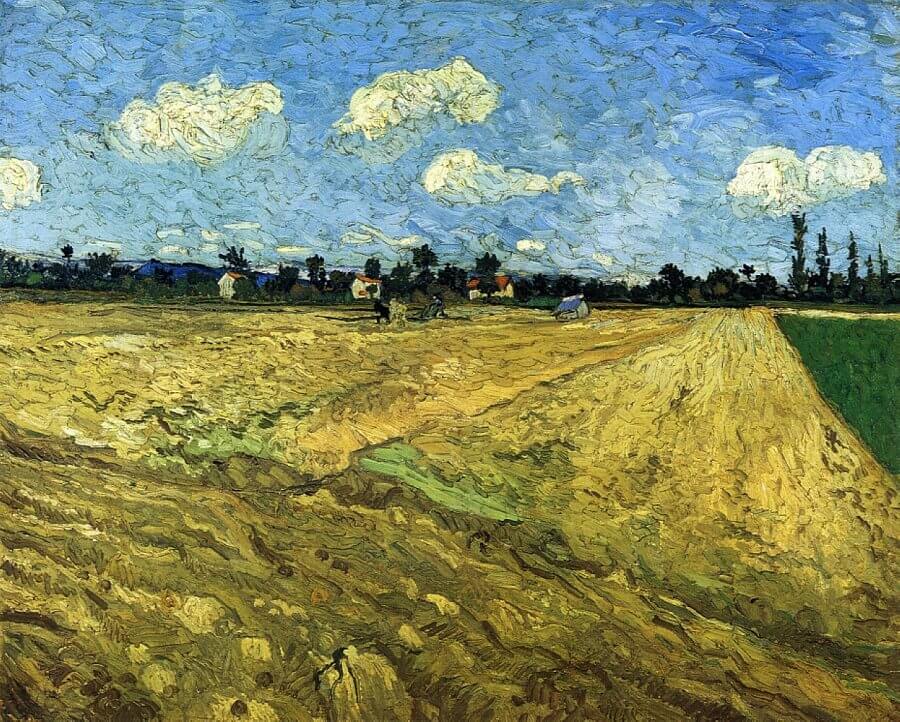The Ploughed Field, 1888 by Vincent van Gogh

One of Van Gogh's greatest desires was fulfilled when he acquired his own house. It cheered him up and he believed, as he stated in a letter to Theo, that now after 'the continuous efforts which you and I have made, at last something is beginning to appear on the horizon: Hope'. He went on to express the expectation that the next batch of paintings he sent to his brother would overshadow the previous two: 'I have better and more saleable work than what I have sent to you and I feel I can continue with it. At last I have faith in it. I know that certain people will be pleased to find poetic subjects again'.
One of these 'better' paintings was The Ploughed Field, which had been painted in the fields on about 26 September between showers of rain. 'A scenery with nothing but lumps of earth, the furrows the colour of an old wooden shoe under a forget-me-not blue sky with white cloud flocks', he wrote poetically to his friend Boch. The artist included the painting, of which he made a sketch in a letter to his brother, in the decoration of his house, providing the canvas with a 'white-deal frame'. Van Gogh was pleased with the painting. After sending his rolled-up canvases to Theo in early May of the next year, he advised his brother to put it on a stretcher on arrival. Later he also recommended a new frame.
The painting shows the progress he had made in executing his canvases rapidly but with assurance. The energetic and broad brushwork, inspired by Monticelli, is applied throughout with great variety, but without degenerating into chaos.
'I would not be surprised if you liked the Starry Night and the Ploughed Fields,' he wrote to Theo. 'There is more peace about them than other canvases. If my work always went like that, I would have fewer worries about money, because people would be more attracted to it if the technique continued to become more harmonious' .




















